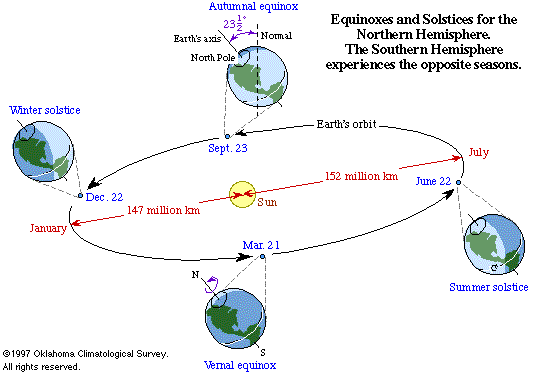|
|
||
|
|
| |
|
|
|
|
|
|
Principle |
All of the earth's weather results from the fact that the atmosphere is unequally heated by the sun. The most significant cause of unequal heating of the atmosphere is because the earth is a sphere and, hence, sunlight does not strike the earth at the same angle at every latitude. |
|
|
|
|
|
|
Figure 1 - The Earth's Orbit Around the Sun | |
|
|
 | |
|
|
The Earth-Sun System |
|
|
|
|
|
|
|
Figure 2 - Sunlight Reaching Earth at Equinox | |
|
|
|
|
|
|
Equinoxes |
|
|
|
|
|
|
|
Figure 3 - Sunlight Reaching Earth at the Winter Solstice | |
|
|
|
|
|
|
Solstices |
|
|
|
|
|
|
|
End |
|
|
| |
|
OK-FIRST
Project, Oklahoma
Climatological Survey,
100 East Boyd Street, Suite 1210, Norman, OK
73019. |